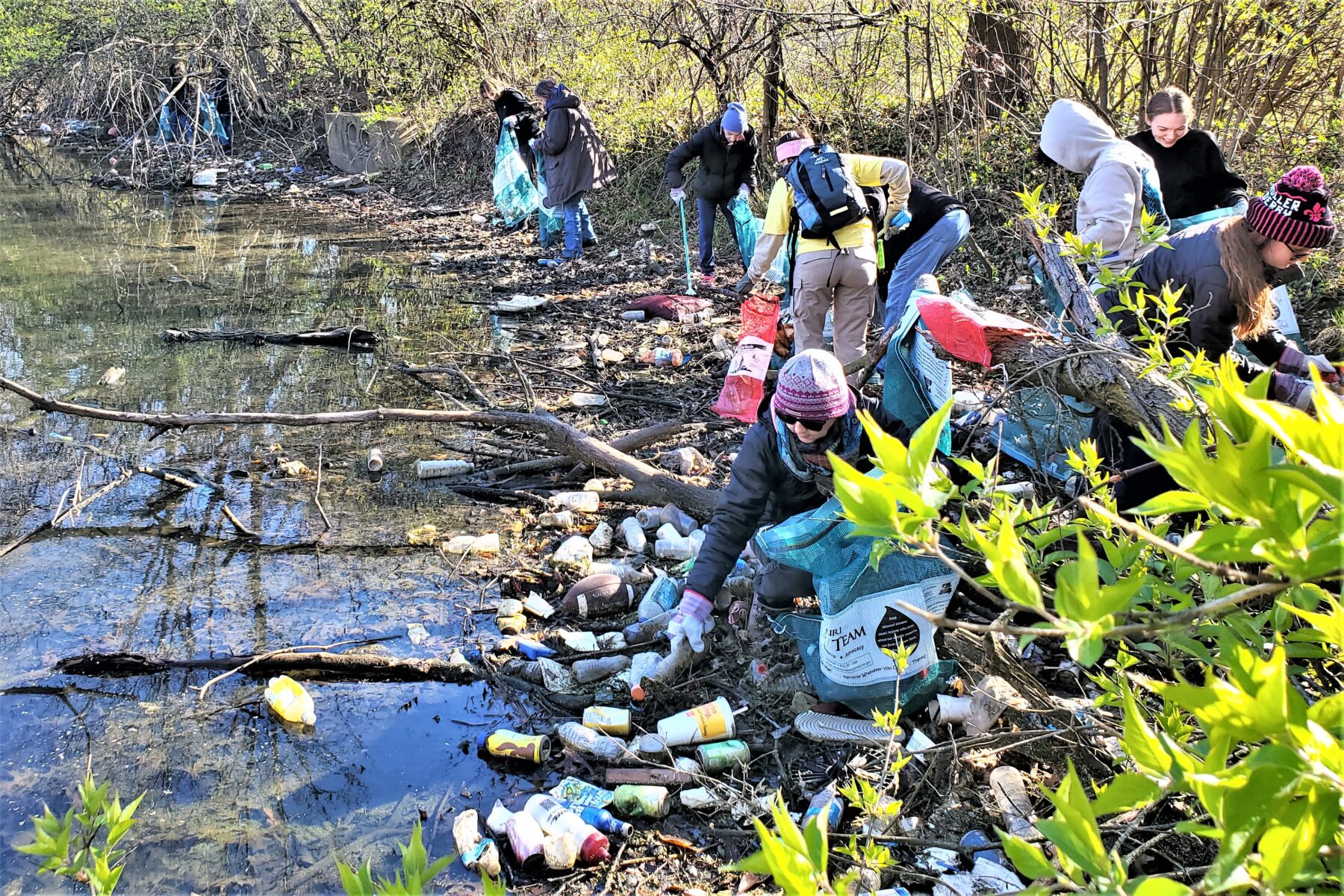Wherever you live, you live in a watershed — even if a river, stream, creek, or lake is nowhere in sight. That’s because water always follows gravity’s pull, flowing downhill to the nearest low point. Creeks flow to streams, streams flow to rivers, rivers flow into even bigger rivers, and the biggest rivers flow into oceans.
The Missouri portion of the Missouri River watershed is the state’s largest, but it’s only a part of the full Mississippi River watershed. The Mississippi drains the states of Missouri, Illinois, and 30 others — nearly 1.2 million square miles in all.
“A watershed is a land area, not a water area,” explained Rebecca O’Hearn, program coordinator for Missouri Stream Team, a partnership of citizens who are concerned about Missouri streams and river conservation “Individual watersheds can be as small as an acre, but all those small watersheds contribute to larger ones.”
Permeable and vegetated surfaces in watersheds help remove sediment pollution and nutrient pollution — fertilizer, in most cases — from the water. Both kinds of pollution work together to damage water quality and increase the likelihood, and the health risks, of flooding.
However, not all watersheds are created equal.
“Wetlands and floodplain areas within watersheds accommodate floodwaters,” O’Hearn said, “and vegetation in [these] wetlands and riparian habitats buffer and filter pollutants, compared to impervious surfaces like bare soil and pavement.”
In the low-lying, urban communities of the Metro East area of Illinois, for example, pavement, geology, and infrastructure combine to create flood and water-quality challenges.
John O’Donnell, water program manager for Heartlands Conservancy, works with community groups to improve watershed health in Illinois. He gathers input from residents for Illinois Environmental Protection Agency-funded projects. Though the projects’ primary goal is water quality, they also seek to decrease flooding.
“People don’t always get flooded by rivers but by water that’s not able to get into rivers,” O’Donnell said.
Currently, O’Donnell and Heartlands Conservancy, a land trust and conservation nonprofit dedicated to improving the lives of people in southwestern Illinois through natural resources, are holding community workshops in Cahokia and surrounding communities to help residents improve their water quality and lessen flooding.

A Missouri Stream Team water cleanup. (Larry Conant)
“We listen to people’s concerns, both about flooding and what’s in the water,” O’Donnell said. “We also talk about the science and geology of their watershed, the Prairie du Pont Watershed, which sits alongside the Mississippi.”
The data O’Donnell and his colleagues gather will lead to a watershed plan, which can help communities apply for additional grant funding for watershed-protection projects, such as small rain gardens.
On the Missouri side of the river, O’Hearn’s Stream Team, which is sponsored by the Missouri Department of Conservation, the Conservation Federation of Missouri, and the Missouri Department of Natural Resources, works to educate Missourians about their role in protecting watersheds.
“We teach people how to take care of their watersheds through good stewardship,” O’Hearn said. “We work on a finer scale than the Missouri River watershed or the Mississippi River watershed, because they are so big.”
Instead, residents can adopt streams to care for through cleanups, pollution control, and good land management practices.
As for flood control, O’Hearn said the best tools people have are natural wetlands and riparian zones, places where land and water meet.
“If citizens protect watersheds locally, they can have a huge positive impact,” she said. “Similarly, any disturbance to a watershed, however small, can have a huge negative impact. That’s why it’s up to all of us to protect our watersheds.”
Ways to Protect Your Watershed
- Conserve water every day. Take shorter showers, fix leaks, and turn off the water when not in use.
- Don’t pour toxic household chemicals down the drain; take them to a hazardous waste center.
- Use hardy plants that require little or no watering, fertilizers, or pesticides in your yard.
- Do not over-apply fertilizers. Consider using organic or slow-release fertilizers instead.
- Place buckets outside to collect rainwater that can be used to water houseplants.
- Plant a tree or rain garden. Vegetation helps filter pollution from water and holds soil in place.
- Use surfaces like wood, brick, or gravel for decks and walkways, which allow rain to soak in and not run off.
- Recycle yard waste in a compost pile and use a mulching mower.
- Never pour used oil or antifreeze into the storm drain or the street.
- Pick up after your dog and dispose of the waste in the toilet or the trash.
- Drive less — walk or bike; many pollutants in our waters come from car exhaust and car leaks.
- Participate in community clean-ups and support environmental legislation.
- Explore a local stream. Find out where it starts and where it drains. Look at topographic maps to find out what influences water flow around you. It’s difficult to preserve and protect what we don’t know.
Author: Tim Fox is a regular contributor to Terrain Magazine.


Leave A Comment